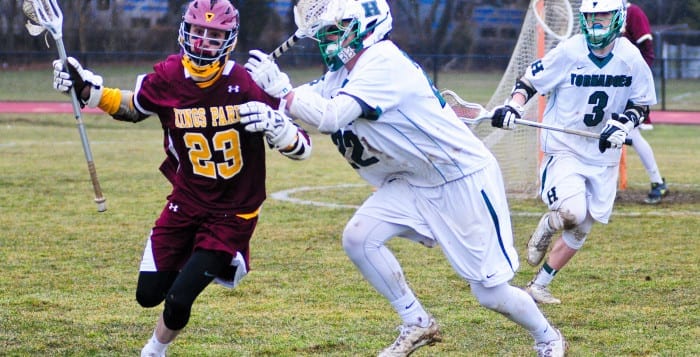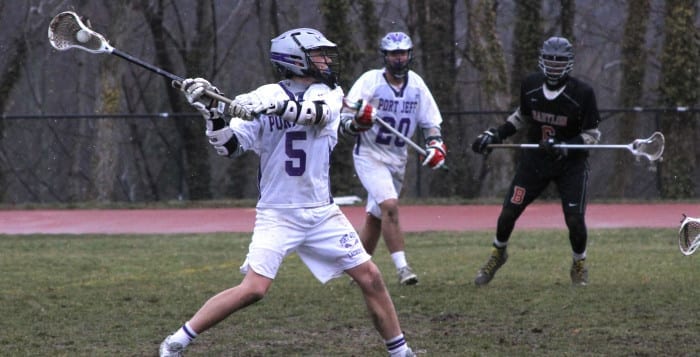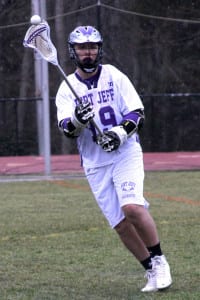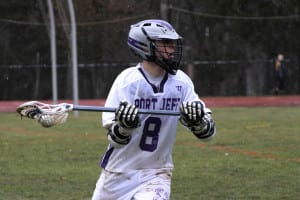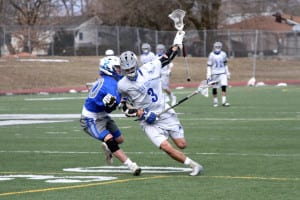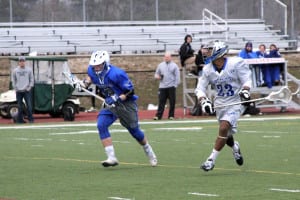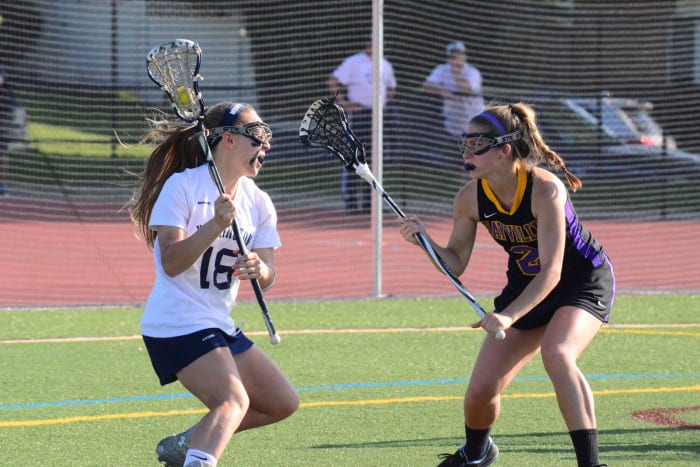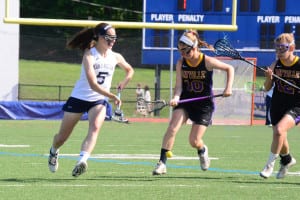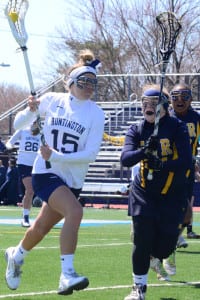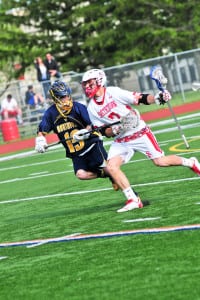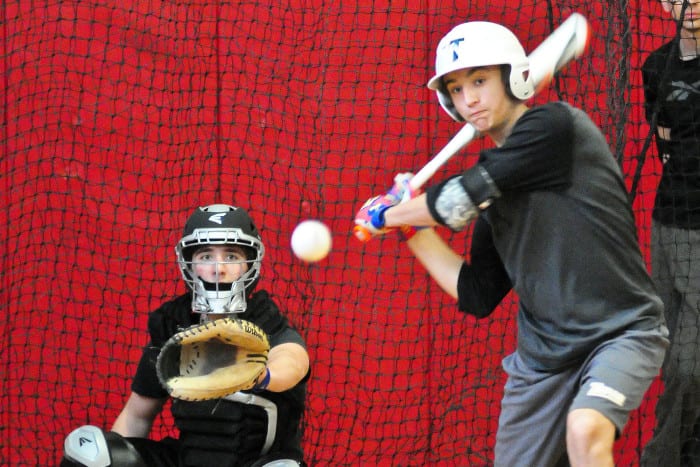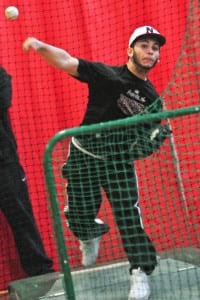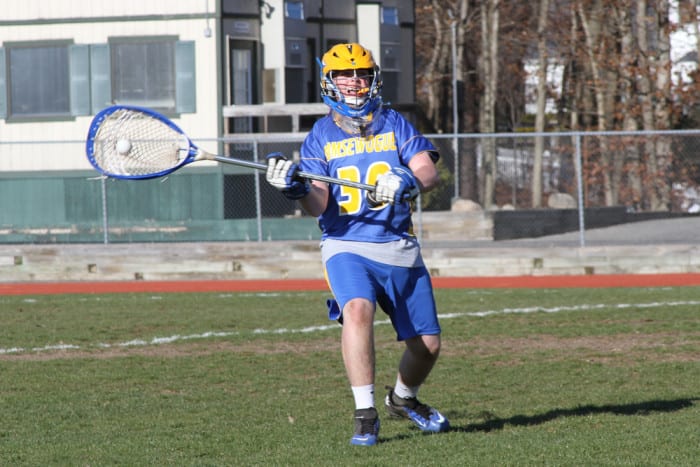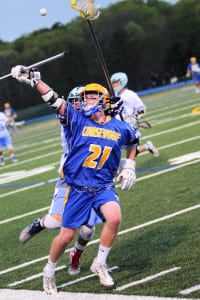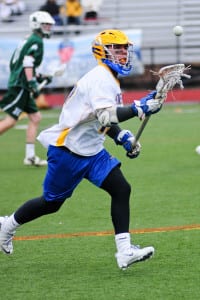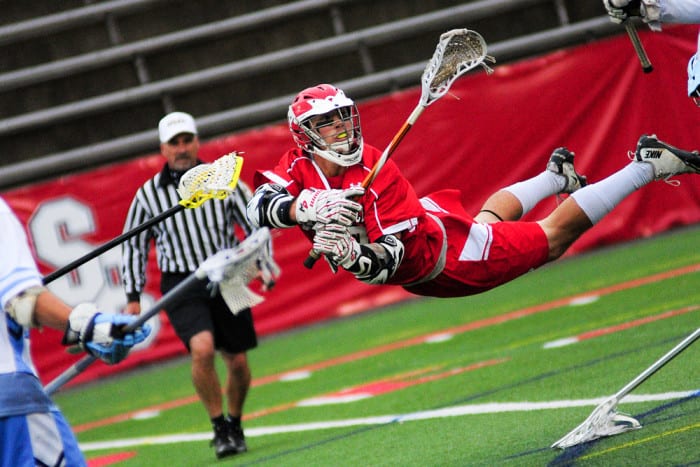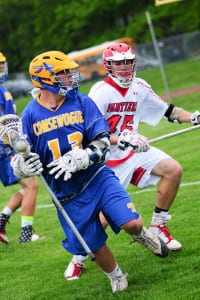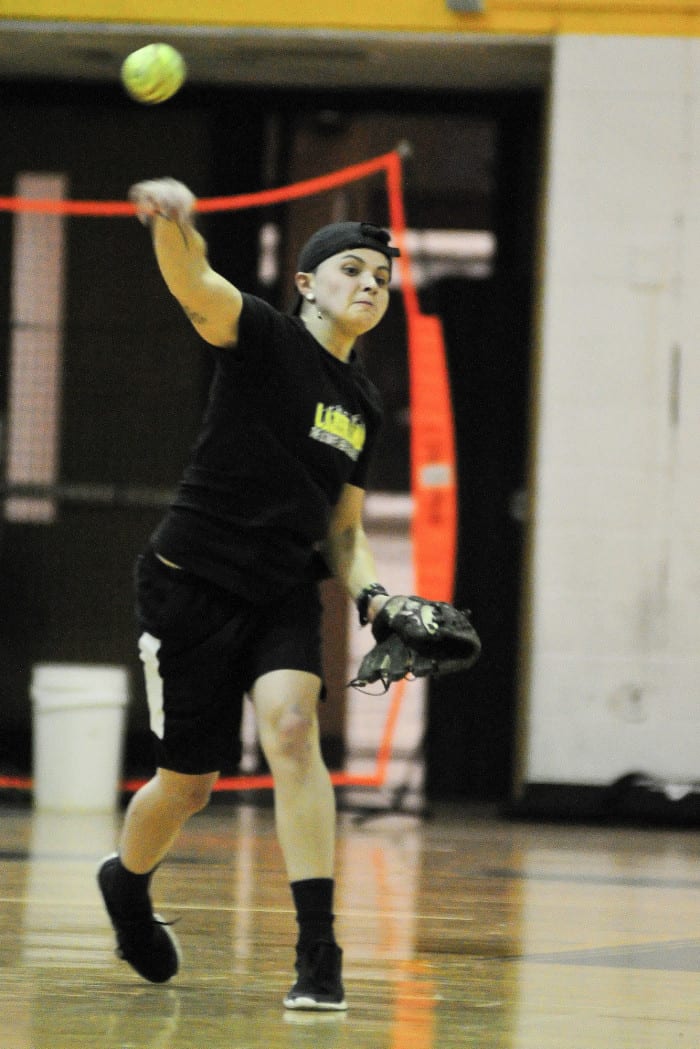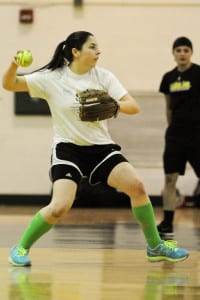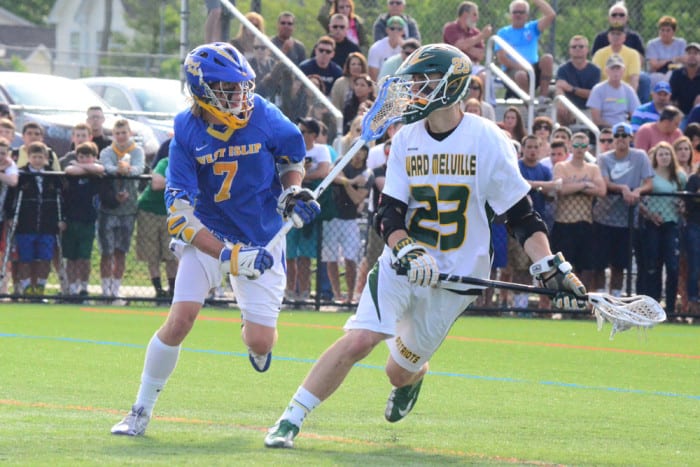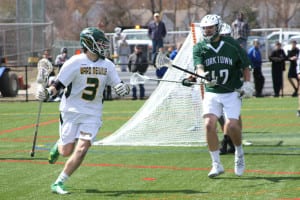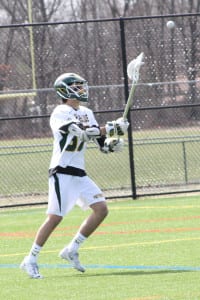By Bill Landon
The King Park boys’ lacrosse team struck first in a League III matchup on a muddy field in a wet, wintry mix, and led twice early in the game, but Harborfields found its rhythm and stomped over the Kingsmen Tuesday to win the game, 12-4.
Kings Park junior midfielder Jimmy Gadaleta hit the scoreboard first to take an early lead, but Harborfields senior attack Terrence Haggerty answered back with an unassisted goal to tie the game. It was Haggerty’s first of five goals to lead his team in scoring.
With less than five minutes left in the quarter, Kings Park retook the lead when senior attacks Joe Hines and Alex Marino connected on the next play. Hines dished the ball to Marino, who found the cage to retake the lead, 2-1.
Harborfields midfielder Andrew Derasmo fed a cross to Haggerty, who fired between the pipes to tie the game at 2-2 to start the second period.
Kings Park head coach J.M. Simpson said Harborfields runs a solid program and have a system that they’ve been successful with for years.
“We kind of knew what we were going to get ourselves into today, but we didn’t do a very good job of executing our game plan,” he said. “We knew they were going to come out and pressure us and we weren’t able to handle that pressure.”
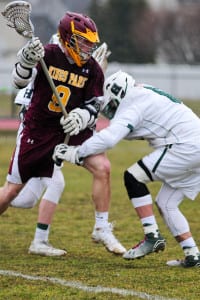
Harborfields senior attack Connor Bennardo struck next when he scored unassisted to put his team back out in front by one. Haggerty, with the hot hand, hit next to edge ahead 4-2 when Kings Park senior midfielder Ray McQuillan answered with a goal of his own off an assist by senior attack Liam Winwood to trail by one, 4-3.
“Today’s game plan was to work hard and beat them to the ground balls and outrun them on the field,” Haggerty said. “In the second half, offensively we got rolling, we scored in transition and with a man up, and we were able to outrun them.”
Both teams had trouble getting traction on a wet, muddy field, but Bennardo scored again to edge ahead 5-3 to end the half.
“From a talent standpoint we’re about even, but I think we outworked them — we got the ground balls and our middies were running all over the place,” Bennardo said. “And that makes us look good on attack, so I can’t thank them enough.”
The second half was all Harborfields, as Haggerty dove around the circle from behind the cage and slipped one in-between the pipes to break out to a 6-3 advantage with seven minutes left in the third.
Harborfields head coach Glenn Lavey chose not to brief his team about Kings Park from a recent scouting report.
“We lost [our opener] by nine goals against Shoreham, so it was more about us, even though there were some things I would’ve liked to prepare them for from the scouting report, but it was more about where Harborfields needs to be,” Lavey said. “So we didn’t tell them one thing about our opponent. We just showed up and played our style.”
Harborfields senior midfielder Tristan Capes-Davis added one of his own halfway through the third to surge ahead 7-3, and by that time, there was no stopping the Tornadoes. Senior midfielder Cameron LaPorta found the cage for the next two scores, to jump out to a 9-3 lead with nine minutes left to play, when Kings Park sophomore midfielder Jac Cutillo tacked on his team’s final point, to trail 9-4.
Before it was over, Harborfields tacked on three more goals with Haggerty’s fifth, Bennardo’s third for the hat trick, and junior attack Quintin McKenna added one of his own to put the game away.
“We made them earn everything today and they gave us a couple of opportunities in transition, and that was the difference,” Lavey said. “Our kids did a good job at grinding and controlling the speed and the tempo of the game, which gave our middies a chance to rest.”
Kings Park senior goalkeeper Harrison Bower had a busy day, and when the dust settled, he had notched 15 saves.
“Harrison Bower’s a senior and a first-year starter who’s been waiting in the wings for a couple of years now,” Simpson said. “He’s been tremendous in our first three games this season, so I give a lot of credit to him.”
With the win, Harborfields improves to 1-1 in League III, after suffering an 18-9 loss to Shoreham-Warding River, while Kings Park dropped to 1-2 in League III, after an 8-6 loss to Elwood-John Glenn and a 10-9 win over Westhampton.
Kings Park will look to bounce back on Tuesday, April 7, when the Kingsmen host Islip. The game is currently slated with an 11 a.m. start time.

